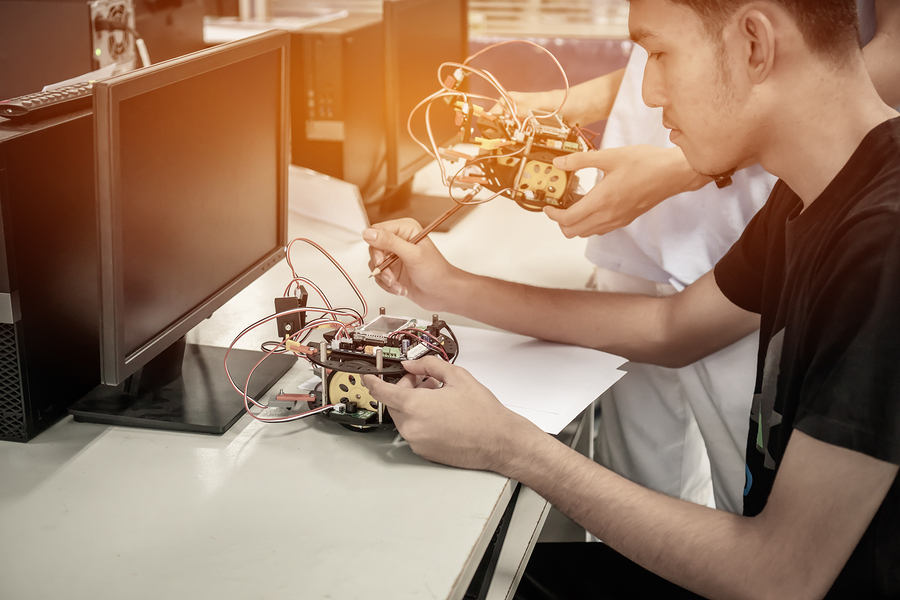Getting kids engaged in science, technology, engineering and math (STEM) is crucial yet challenging. Rote lectures and dull textbook readings fail to spark interest. Students thrive when STEM comes alive through immersive projects, captivating storylines, and hands-on discovery. This article shares interactive teaching strategies to Build Engagement in STEM Classrooms and to make your classroom a dynamic STEM learning hub.
Turn Lessons Into Gripping Mysteries
Children love puzzles and mysteries. Tap into this by framing lessons as thrilling investigations. Begin a physics unit by posing an intriguing question like “Why do some balls bounce higher than others?” Prompt students to gather data, test theories, debate ideas, and discover the answer through experimentation. Presenting academics as exciting detective work rather than passive reading motivates young learners. Let their curiosity drive inquiry and discovery.
Incorporate Creative Design Challenges
Engineering lends itself perfectly to hands-on building activities. Give groups a stimulating design goal, such as crafting a tower from limited materials that can bear weight. Provide items like straws, popsicle sticks, rubber bands and tape. Let their imaginations run wild constructing prototypes. Testing different structures teaches trial-and-error persistence, collaboration and real-world applications. Seeing their physical creations come to life cements conceptual understanding. Tap into students’ natural creativity through inventive projects.
Feature Thrilling Online Simulations
Virtual reality now allows experiencing amazing phenomena firsthand. Rather than just studying photos of volcanoes, students can transport to erupting craters through immersive simulations. Or have youth simulate flying spacecraft through the solar system using simulator programs. Online tools make dangerous, distant or microscopic worlds accessible for thrilling investigations. Blend screen-based discovery with hands-on modeling for multimedia STEM experiences.
Take Learning Outdoors
When weather permits, bring lessons outside to engage students in nature. Have ecology students catalog local plant/animal life. Challenge physics students to experiment with playground equipment to identify gravity and energy concepts at work. Identify cloud formations, test water samples at a lake, or track sun placement. The natural world provides an inspiring hands-on STEM laboratory.
Make Concepts Come Alive Through Role Play
Acting and body movement turn passive listeners into active learners. Have volunteers physically model atomic structure by orbiting as protons and electrons, joined by classmates as bonds. Demonstrate digestive processes by having students mimic each enzymatic reaction in the stomach. Kinesthetic experiences imprint STEM concepts at a deeper level. Allow students to embody knowledge through dramatic portrayals.
Brighten up Practice Problems with Imaginative Scenarios
Standard story problems often feel dry to students. Inject creativity into practice sets by presenting imaginary adventures. Have learners calculate fuel needs for a mission to Mars, determine weight distribution to rescue fairies stuck mid-river, or mix chemical formulas to grow giant vegetables. Couch math and science practice within exciting fictional tales. Appeal to their imagination.
Incorporate Toys to Demonstrate Principles
A simple toy can provide a powerful window into STEM fundamentals. Bounce balls to show gravity, inertia and collision. Stack blocks to model atomic structures and load distribution. Use dominoes, yo-yos, tops and pull-back cars to visualize concepts like potential vs kinetic energy, torque and friction. Incorporating playthings into teaching captivates students by grounding abstract principles in concrete objects.
Make Connections to Real-World Careers
Students engage more deeply when they grasp STEM applications in the real world. Spotlight professionals using concepts from your lessons. Better yet, invite engineers, programmers, architects and others to share firsthand how STEM drives their work. Exposing students to diverse STEM career paths expands their horizons and helps them envision practical uses for classroom knowledge.
Strategies to Support Hands-On, Interactive Learning
While incorporating the above novel activities, also apply these key strategies:
Ask Open-Ended Questions
Pose big questions without simple answers. “Why do seasons change?” “How might we make more earthquake resistant buildings?” Open-ended prompts drive inquiry, critical thinking and debate.
Support Questioning and Risk-Taking
Welcome students sharing ideas in class, even partial understandings. Model thinking through problems collaboratively. Establish that mistakes provide growth opportunities, not failure. Help students develop inquiry and perseverance.
Differentiate Instruction
Get to know individual strengths, weaknesses, interests and learning styles. Tailor teaching methods, materials and pacing accordingly. Support students at their levels while still challenging growth.
Foster Peer Collaboration
Have classmates teach and assist each other. Let groups tackle projects cooperatively. Emphasize working together toward mastery rather than competing for grades.
Relate Concepts to Student Lives
Localize lessons with examples and analogies from students’ cultural backgrounds. Tie concepts to current events and hobbies students relate to. Real-world connections boost engagement.
Keep Explorations Student-Driven
Guide learning through probing questions rather than step-by-step procedures. Allow students freedom in designing projects and experiments. Nurture their innate sense of wonder and discovery.
Be Passionate About STEM
Enthusiasm is infectious. Share personal stories that sparked your own interest. Convey awe at the elegance of mathematics, the intricacy of cells, or the vastness of the galaxies. Your inspiration and energy motivates budding scientists.
Make Learning Relevant
Tie concepts to real-world problems students care about like climate change, disease, or technology improvements. Help them see how STEM can make a difference. Purpose ignites motivation.
Conclusion
Lively classrooms turn students into active scientific explorers through inquiry, outdoor projects, dramatic portrayals, and engaging virtual worlds. Student-driven investigations guided by supportive educators equip children for lifelong STEM success. Allowing kids’ innate curiosity to direct discovery makes STEM learning fun, meaningful and inspirational.






